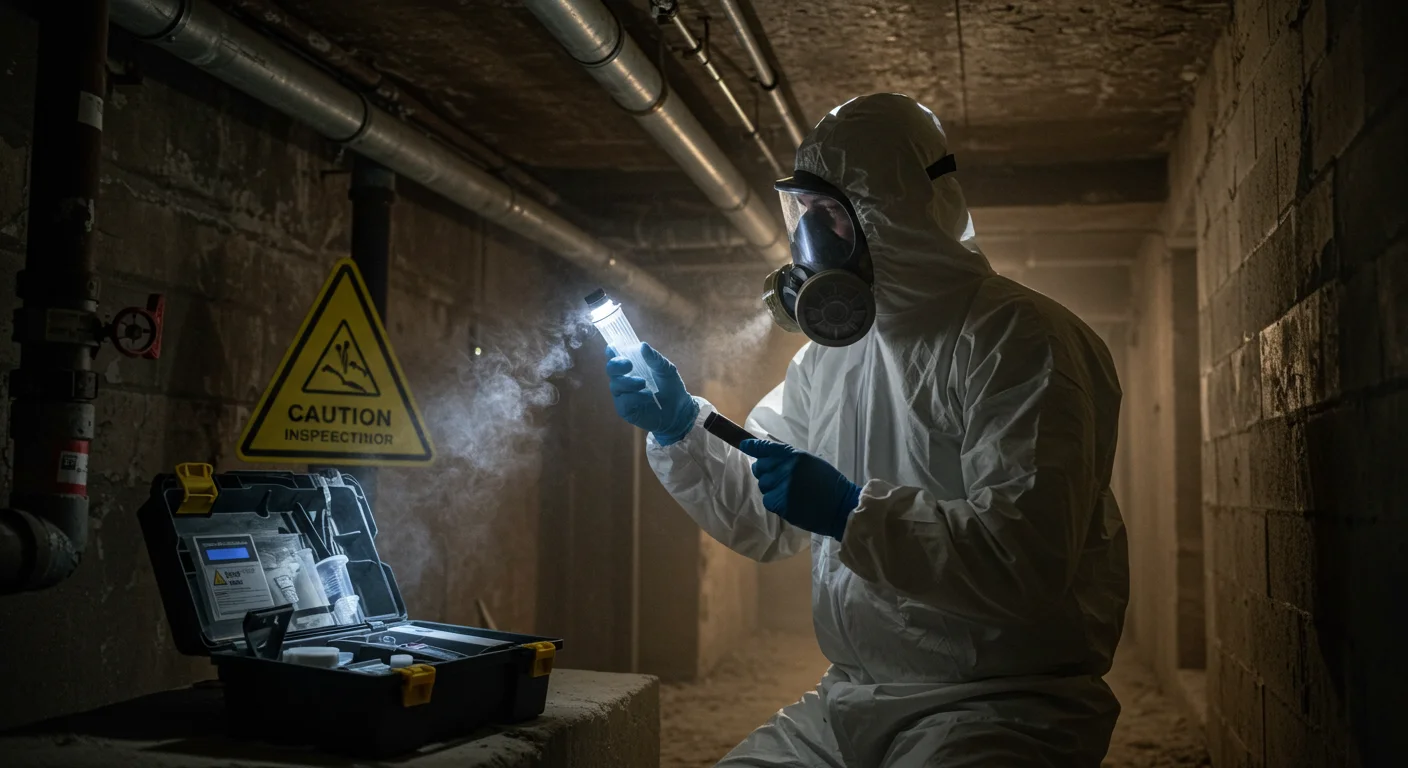As concern over environmental hazards grows, the term “asbestlint” often sparks confusion. What does it really mean? This blog post clarifies common misconceptions about asbestlint and highlights its actual risks. Whether you’re a homeowner, contractor, or curious about building materials, understanding asbestlint is key to making safe choices.
Introduction
Asbestlint is known for its dangers, but the term “asbestlint” adds confusion. For those involved in construction materials and safety, asbestlint can be misunderstood. It refers to asbestos-containing products, which have been widely misinterpreted over the years.
In this article, we’ll explore asbestlint’s history, uses, health risks, and essential safety steps. Whether you’re a contractor or homeowner, understanding asbestlint helps support safe choices during renovations.
History of asbestlint and its Uses
Asbestos has a long, complex history that dates back thousands of years. Ancient civilizations recognized its unique properties and utilized it for various purposes. The Greeks and Romans used asbestos in textiles, believing it to be fireproof.
Fast forward to the 19th century; industrial use surged dramatically. Manufacturers embraced asbestos for its insulation capabilities, durability, and resistance to heat. It became a staple in construction materials like roofing shingles and cement products.
By the mid-20th century, awareness of asbestos expanded beyond just functional benefits. Its applications included automotive parts, shipbuilding materials, and even household items such as toasters.
Despite early admiration for this mineral’s versatility, growing evidence began revealing the dangers associated with exposure. As society evolved, so did our understanding of its health implications—leading to significant regulatory changes over time.
The Misinterpretation of Asbestlint
Asbestlint is often misunderstood, leading to confusion among consumers and professionals alike. Many people mistakenly believe that all asbestos products are equally hazardous without recognizing the variations in their composition and application.
This misinterpretation stems from a lack of awareness about what asbestlint actually is. Asbestlint designates products that include asbestos fibers—usually with a fibrous or lint-like texture as a result of manufacturing processes. While it indeed contains asbestos fibers, not every product featuring this material poses the same level of risk. The context surrounding its usage plays a crucial role in determining safety.
Furthermore, sensational media coverage has contributed to widespread fear regarding any contact with asbestlint. This results in individuals avoiding necessary precautions or proper disposal methods due to misconceptions about danger levels associated with specific types of materials. Understanding these nuances can prevent unnecessary alarms while promoting informed decision-making concerning handling asbestos-related products responsibly.
Types of asbestlint Products and Their Uses
Asbestlint products come in various forms, each with unique applications. The term “asbestlint” is used for products made with asbestos fibers that often give the material a soft, fibrous, or lint-like consistency. Commonly used types include insulation materials, roofing shingles, and flooring tiles. Insulation made from asbestos was prized for its fire-resistant properties and durability. It could be found in homes and buildings built before the 1980s.
Roofing often used asbestos fibers for durability, while flooring tiles utilized asbestos for strength and heat resistance. These materials were popular in residential and commercial spaces.
Some joint compounds also included asbestos for flexibility and adhesion in construction. Due to associated risks, material choices have since changed significantly.
Health Risks Associated with asbestlint Exposure
Asbestos exposure poses significant health risks that can emerge years after initial contact. The tiny fibers can become airborne and easily inhaled, leading to serious respiratory issues. One of the most alarming conditions linked to asbestos is mesothelioma. This aggressive cancer affects the lining of the lungs and abdomen, with a poor prognosis for those diagnosed.
Another common ailment associated with exposure is asbestosis. This chronic lung disease causes scarring of lung tissue, resulting in shortness of breath and persistent coughing. Aside from these severe illnesses, asbestos has been tied to other respiratory diseases. The risk increases with prolonged exposure or high levels of inhalation over time.
Protecting oneself from asbestos is essential for anyone working with it. Awareness and preventive actions are crucial for health and safety.
Regulations on Asbestlint Use and Safety Measures
Regulations surrounding asbestos use are stringent due to its associated health risks. Various countries have implemented laws that govern the extraction, sale, and usage of asbestos products.
In many regions, asbestlint—a specific type of asbestos product used in sealing applications—falls under strict scrutiny. Manufacturers must adhere to guidelines set by health agencies to ensure safety during production and installation.
Safety measures play a crucial role in minimizing exposure. Workers handling asbestlint must use personal protective equipment (PPE) and follow containment protocols. Proper training is essential for anyone dealing with these materials.
Regular inspections also help enforce compliance with regulations. This ensures that any remnants of asbestos-containing products are managed correctly, preventing potential dangers in residential or commercial spaces. Awareness campaigns educate the public about the risks involved with improper handling or disposal of such materials, further enhancing community safety.
Alternatives to Asbestos Products
Finding alternatives to asbestos products is crucial for health and safety. Many safer materials can effectively replace asbestos in various applications. One popular choice is fiberglass. This non-toxic option provides insulation without the risks associated with asbestos. It’s widely used in construction, HVAC systems, and even the automotive industry.
Another alternative is cellulose insulation made from recycled paper products. It not only offers excellent thermal performance but also helps reduce waste by repurposing materials that would otherwise end up in landfills.
Mineral wool is another contender, known for its fire-resistant properties. It’s commonly utilized in building construction as an insulating material that protects against heat and sound.
For flooring applications, vinyl or rubber tiles present a stylish yet safe solution. They come in various designs and are durable enough to withstand heavy traffic while being free of harmful fibers. These alternatives provide peace of mind while ensuring buildings remain functional and efficient without compromising safety standards.
Debunking Myths about Asbestlint
Asbestlint often gets tangled in misconceptions that can lead to confusion and fear. One common myth is that all forms of asbestlint are equally hazardous. In reality, the risk largely depends on the type and condition of the asbestos material.
Another prevalent belief is that only older buildings contain asbestlint. Many modern materials can still include asbestos fibers, making it crucial for homeowners and builders to be vigilant. People also assume that simply sealing off asbestlint makes it safe. However, disturbed or damaged products can release harmful fibers into the air, posing serious health risks.
Lastly, some think they can safely handle asbestlint without professional help. This isn’t true; specialized training is necessary to manage these materials properly. It’s vital to separate fact from fiction when dealing with this substance to ensure safety measures are effectively implemented.
Conclusion
Understanding what asbestlint is and the context surrounding it is crucial. Asbestos products have a complicated history, often associated with both utility and danger. Misinterpretations can lead to confusion, fear, or negligence regarding asbestos management.
It’s essential to recognize the different types of asbestos products available and their specific applications. Each type carries unique risks which should not be overlooked. The health implications tied to asbestos exposure are serious; even minimal contact can pose significant threats over time.
Regulations exist for a reason—they aim to protect both workers and consumers from potential harm caused by these materials. Safety measures must be diligently followed when working with or around asbestos-containing products. There are viable alternatives on the market today that eliminate the need for hazardous materials like asbestlint. Transitioning towards safer options promotes better health outcomes while still fulfilling construction needs. Take the next step: research your local asbestos regulations, schedule a home inspection if you’re unsure about building materials, or share this information with others to contribute to safer communities.
Misinformation abounds about asbestlint and its properties; debunking myths helps clarify reality from fiction in this field. Proper education fosters responsible handling practices concerning all asbestos-related products. Awareness plays a pivotal role in managing risk effectively. Emphasizing knowledge leads us toward safer environments where people work and live without unnecessary fear or danger related to these enduring materials.

